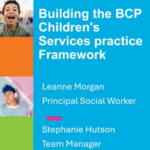New guidelines for social workers applying for emergency child protection orders have been laid down after a High Court judge highlighted “multiple failings” in a case where a nine-year-old was taken into care on the basis of flawed and incomplete evidence.
Mr Justice McFarlane was highly critical of the conduct of a council’s social services department, and the court that approved its application for an emergency order. The girl then spent 14 months in foster care. None of the parties can be identified.
He ordered the council to pay £200,000 towards the family’s legal aid bill.
Social workers thought the case involved Munchausen’s syndrome by proxy, now known as fabricated or induced illness, but did not have any medical evidence.
The judge ruled that, in future, such an assertion must be backed up by medical opinion to warrant a child’s removal.
He also criticised magistrates for granting the emergency order solely on the basis of a social services team manager’s “broad knowledge of the case”, and the council for feeling this level of evidence was adequate.
In future, he said, courts dealing with such applications should have copies of the minutes of the most recent child protection case conference and evidence should come from the best available source, usually the social worker with direct knowledge of the case.
He also stated that a child must be in imminent danger to justify an emergency protection order.



 Bournemouth, Christchurch and Poole
Bournemouth, Christchurch and Poole  Hampshire County Council
Hampshire County Council  Oxfordshire County Council
Oxfordshire County Council  South Gloucestershire Council
South Gloucestershire Council  Wokingham Borough Council
Wokingham Borough Council  Harnessing social work values to shape your career pathway
Harnessing social work values to shape your career pathway  Webinar: building a practice framework with the influence of practitioner voice
Webinar: building a practice framework with the influence of practitioner voice  ‘They don’t have to retell their story’: building long-lasting relationships with children and young people
‘They don’t have to retell their story’: building long-lasting relationships with children and young people  Podcast: returning to social work after becoming a first-time parent
Podcast: returning to social work after becoming a first-time parent  Workforce Insights – showcasing a selection of the sector’s top recruiters
Workforce Insights – showcasing a selection of the sector’s top recruiters  Free CPD on Parkinson’s for health and social care staff
Free CPD on Parkinson’s for health and social care staff 

 Facebook
Facebook X
X LinkedIn
LinkedIn Instagram
Instagram
Comments are closed.